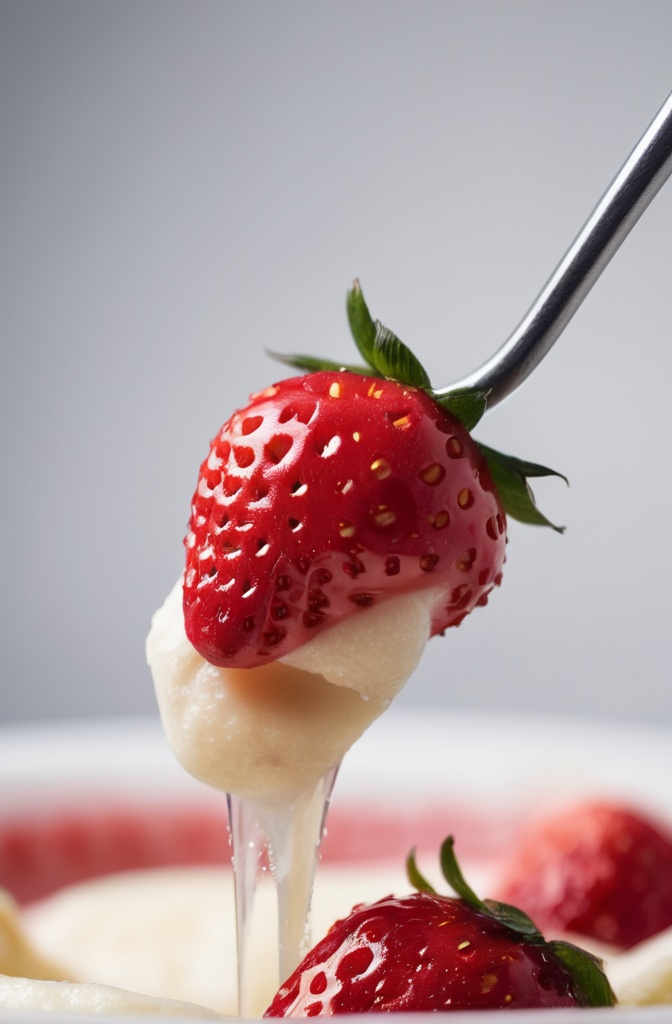Dogs don’t lie. If they love something, you’ll know. No poker face, no fake smiles. Just that happy-tail spin and eyes like cartoon hearts. And if you’ve ever handed over a chilled strawberry banana bite to your dog on a hot day, you’ve seen that magic firsthand.
But here’s the thing: not every cute-looking pet snack deserves to be called “healthy.” The pet food industry’s full of fluff, literally and figuratively. That’s why we’re cutting through the noise today. We’re taking a deep dive into frozen strawberry banana bites for dogs — what makes them tick, how to make ‘em the right way, and why vets, canine nutritionists, and even behaviorists are paying more attention.
Let’s get this pawty started.
The Rise of the Homemade Frozen Dog Treat
Pet parents are no longer just, well, pet parents. They’re dog nutritionists, allergy detectives, and low-key chefs with ice cube trays that haven’t seen water in years. As of 2024, over 48% of American dog owners report making homemade dog treats at least once a week. That’s not a trend — it’s a lifestyle shift.
The frozen treat category is blowing up, too. Especially during warmer months. According to a 2023 NielsenIQ Pet Trends Report, frozen dog treats saw a 28% year-over-year sales increase, with fruit-based recipes topping the charts. Strawberries and bananas? A top combo. Affordable, available, and canine-approved.
But let’s slow down a sec — are these actually good for dogs?
Are Strawberries and Bananas Safe for Dogs?
Short answer? Yep. But it ain’t all black and white.
Strawberries
Strawberries are a sneaky powerhouse. They’re loaded with antioxidants like anthocyanins and ellagic acid — both linked to reduced inflammation and improved cell repair in dogs. A 2017 study published in the Journal of Animal Physiology and Animal Nutrition found that diets supplemented with berries helped reduce oxidative stress markers in working dogs. That’s a big deal.
Strawberries are also high in Vitamin C, though dogs produce their own. Still, some vets argue that supplemental C can be useful for seniors or stressed pups. They’re also high in fiber, but—caution flag here—too many can upset the gut. We’re talkin’ gurgly stomachs and surprise puddles.
Oh, and always go fresh or frozen. Avoid canned or syrup-soaked strawberries — those are sugar bombs in disguise.
Bananas
Bananas? Equally loved, equally misunderstood.
They’re rich in potassium, magnesium, Vitamin B6, and biotin. They support muscle function, nerve health, and even improve coat shine. That’s the good part.
But they’re also high in sugar. Natural sugar, yes, but sugar nonetheless. A medium banana packs around 14g of sugar, which is no joke for a 20-pound dog. It’s fine in moderation, but daily banana binges? Not ideal.
So yeah, strawberries and bananas are safe, but portioning matters. Always.

The Real Science Behind Frozen Treats for Dogs
Let’s be blunt. Frozen treats aren’t just cute Instagram bait.
They serve a legit physiological function — especially for dogs that live in hot climates or those prone to overheating (think: pugs, Frenchies, senior labs). Dogs don’t sweat like we do. They pant and sweat a bit through their paw pads, but that’s not enough sometimes. Cooling them from the inside out can make a noticeable difference.
Veterinary thermoregulation studies suggest that feeding dogs frozen treats may reduce internal temperature by up to 1.5°F within 15 minutes, depending on size and ambient temperature. That can make or break a heatstroke threshold.
Plus, the act of licking a frozen treat stimulates the dog’s parasympathetic nervous system — that’s the “rest and digest” part. It’s calming. That’s why frozen enrichment toys like stuffed Kongs are so popular with trainers.
So yeah — frozen bites aren’t just a summer gimmick. They’re functional.
How to Make Frozen Strawberry Banana Bites for Dogs
You’d think it’s simple — just freeze the stuff, right? But hold on. A bit of technique and know-how takes these from “meh” to “wow.”
The Base Recipe (Vet-Approved)
Ingredients:
- 1 ripe banana
- 4–5 fresh strawberries (hulled)
- ½ cup plain Greek yogurt (unsweetened, no xylitol)
- Optional: 1 tbsp ground flaxseed or unsweetened peanut butter
Instructions:
- Blend everything until smooth.
- Pour into silicone molds or ice cube trays.
- Freeze for at least 4 hours.
- Store in an airtight container for up to 2 weeks.
That’s it. No weird additives. No coloring. Just food.
Tips from the Pros
- Yogurt Choice Matters: Avoid anything with artificial sweeteners. Xylitol is extremely toxic to dogs. Also, go full-fat — they digest it better.
- Size Matters: Keep each bite small. Dogs tend to swallow these whole if they get too excited.
- Add Texture: A few whole chia seeds or shredded coconut can make the bites more interesting for texture-sensitive dogs.
Who Should Not Eat These?
Let’s not pretend these treats are perfect for every pooch.
Dogs with diabetes, pancreatitis, or chronic GI issues should avoid high-sugar fruit treats — even natural ones. Bananas in particular can spike blood sugar in dogs with insulin issues.
For lactose-intolerant dogs (yes, it’s a thing), swap yogurt for goat’s milk or coconut milk yogurt. Or ditch the dairy altogether and freeze the fruit puree straight up.
And if your dog is on a restricted kidney or heart diet (where potassium and phosphorus matter), always clear fruit-based snacks with your vet. These minerals, in excess, can throw off delicate balances.

Common Misconceptions
Let’s clear up a few myths that float around like dandelion fluff.
1. “Fruit is unnatural for dogs.”
Wrong. Wolves forage berries in the wild. Dogs, being opportunistic omnivores, can digest fruits in moderation just fine. It’s the processed junk we should be worried about.
2. “Frozen treats crack teeth.”
Not likely — unless you’re freezing giant bricks. Small, soft frozen bites thaw quickly and pose little risk. Use soft silicone molds and serve responsibly.
3. “They don’t need snacks if they’re on kibble.”
Tell that to a working border collie burning 1500+ calories a day. Treats can play a functional role — for training, enrichment, and yes, bonding.
Emerging Trends in Canine Frozen Treats
Innovation’s kicking into high gear. We’re seeing brands develop probiotic-infused frozen bites, CBD-strawberry options for anxious dogs, and even meat-fruit hybrids (like salmon banana, oddly enough).
Pet wellness brands like The Honest Kitchen and Bocce’s Bakery are already offering freeze-and-serve solutions with fruit bases. But what sets homemade apart? Control. Ingredient transparency. And often — way lower costs.
In fact, a DIY batch costs around $0.12 per treat, versus $0.50–$0.75 for commercial versions. That adds up over a hot summer.
Pro Tips from Veterinary Nutritionists
- Rotate Ingredients: Don’t rely on just one fruit. Try mixing in blueberries, pumpkin, or apples for variety (always core apples first).
- Watch Weight: Treats should never exceed 10% of your dog’s daily caloric intake. For a 30-lb dog, that’s about 80 calories max from snacks.
- Observe Stool Quality: If stools get soft or mucousy, back off. Even healthy ingredients can disrupt balance if overfed.
Final Thoughts: Treat With Purpose
Frozen strawberry banana bites for dogs are more than a cute TikTok trend. They’re evidence of a broader shift — toward mindful, informed, intentional pet parenting. A shift away from mass-produced, shelf-stable mystery treats toward fresh, functional foods.
But let’s not get carried away. These bites aren’t magic. They’re a part of a bigger picture: balanced nutrition, regular vet checkups, exercise, and yes — a little love in every bite.
If you make these at home, keep it simple, keep it safe, and always watch how your dog reacts. Because at the end of the day, a wagging tail is the best kind of feedback.
Want to experiment with other dog-safe fruit combos? Or need advice on pups with sensitive tummies?
FAQs
What are frozen strawberry banana bites for dogs?
They’re homemade frozen treats made with strawberries, bananas, and yogurt—safe, refreshing, and nutritious for most dogs.
Are strawberries and bananas safe for dogs?
Yes, both are dog-safe in moderation and offer fiber, vitamins, and antioxidants.
Can all dogs eat these frozen treats?
No, dogs with diabetes, pancreatitis, or lactose intolerance should avoid or modify the recipe.
How often can I give my dog these treats?
Once a day or a few times a week is fine, depending on your dog’s size and health.
Can I use store-bought frozen fruit?
Yes, but make sure it’s unsweetened and free from added syrups or preservatives.
Is Greek yogurt necessary?
Not strictly, but it’s preferred for its probiotics and lower lactose content.
What size should the treats be?
Small, bite-sized portions are best to avoid choking or overfeeding.
Do frozen treats help cool dogs down?
Yes, they can lower internal body temperature slightly and help prevent overheating.
How long do these treats last in the freezer?
They’ll stay fresh for up to two weeks if stored in an airtight container.
Can I substitute yogurt with non-dairy options?
Absolutely, use plain goat’s milk yogurt or coconut yogurt if your dog’s dairy-sensitive.
Are these treats suitable for puppies?
Yes, but in small amounts and only after introducing fruit gradually into their diet.
Will these treats clean my dog’s teeth?
Not really—while they may scrape a bit, they don’t replace dental care.
Can I add other ingredients?
Yes, chia seeds, peanut butter (xylitol-free), or pumpkin puree are great additions.
Do these treats cause weight gain?
Only if overfed—stick to the 10% treat rule of your dog’s daily calorie intake.
Are commercial frozen dog treats better?
Not necessarily—homemade offers better control over ingredients and costs less.

Mariana is a passionate home cook who creates delicious, easy-to-follow recipes for busy people. From energizing breakfasts to satisfying dinners and indulgent desserts, her dishes are designed to fuel both your body and hustle.
When she’s not in the kitchen, she’s exploring new flavors and dreaming up her next recipe to share with the Foodie Hustle community.

